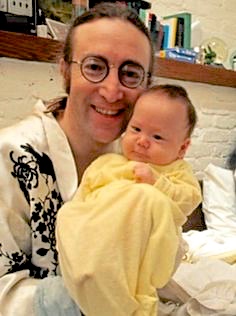Note: Kevin Barry was WINNER of the 2013 IMPAC Dublin Literary Award, the Author’s Club Best First Novel Award, and the European Union Prize for Literature for his previous novel City of Bohane. He is also WINNER of the Rooney Prize for Irish Literature for his stories and overall body of work.
“Sometimes you [can] walk across a field and a sense of elation [will] come over you….That patch of happiness could be floating around the field for the last ten years or the last three hundred and fifty years. Out of love that was had there or a child that was playing or an old friend that was found…Whatever it was, caused a great happy feeling and it was left there in the field. You’re after walking into it. And for half a minute you’re lifted and soaring but then you’re out the far side again… “–Cornelius O’Grady, John Lennon’s driver in Ireland.
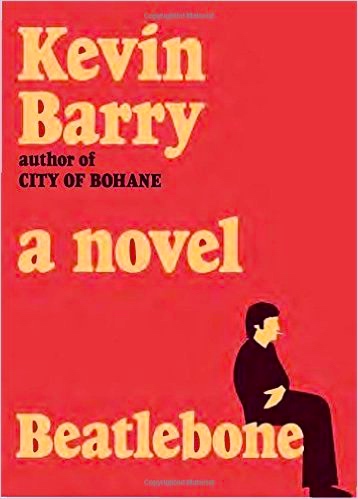
On his way to Dorinish, the tiny Irish island which he bought ten years before, John Lennon, now thirty-seven, is in the midst of a personal crisis. It is 1978, and the Beatles have not been together for eight years. Lennon has watched his first marriage crumble and his son Julian disappear from his life. Married in 1969 to Yoko Ono, he separated from her for eighteen months, shortly after their marriage. Later reunited, they had a baby, Sean, with whom he now spends most of his time at home in New York, but he is otherwise at loose ends. He has not written any music since 1975, and he feels as if he has lost his way, both musically and personally. Famous, at this point, for his counterculture points of view, he has actively courted attention to publicize his anti-government agenda, and has become involved with drugs, Marxism, the Black Panthers, and behavior which has put him under the surveillance of the FBI, though he has otherwise tried to avoid publicity in his personal life. He now feels that if he can get away and spend time alone for only three days on Dorinish, that he might come to some new conclusions about his life and how to live it.
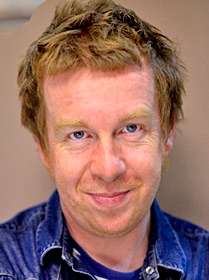 Author Kevin Barry, who has shared some of Lennon’s own experiences, from living in Liverpool for two years (“one of the most sentimental cities on earth,”) to traveling to Lennon’s island, and, like Lennon, experimenting with Primal Scream therapy, comes as close to illustrating the idea of “channeling” as it may be possible for an author to get in recreating and providing perceptive insights into a famous real person. In his hands, Lennon comes to life on all levels – his hopes, dreams, insecurities, frustrations, and even his arrogance as he returns to Ireland from New York, wondering “How many more times are they going to ask me to come on the f…ing Muppet Show?” For his arrival on the west coast of Ireland, Lennon has hired a car and driver, Cornelius O’Grady, whose primary job is to get Lennon to the island while avoiding the press, and in O’Grady, Barry has also created one of the great literary characters, endowed with consummate charm, humor, a sense of irony, and an appreciation of nature’s “magic,” the perfect foil for Lennon with his intense self-analysis.
Author Kevin Barry, who has shared some of Lennon’s own experiences, from living in Liverpool for two years (“one of the most sentimental cities on earth,”) to traveling to Lennon’s island, and, like Lennon, experimenting with Primal Scream therapy, comes as close to illustrating the idea of “channeling” as it may be possible for an author to get in recreating and providing perceptive insights into a famous real person. In his hands, Lennon comes to life on all levels – his hopes, dreams, insecurities, frustrations, and even his arrogance as he returns to Ireland from New York, wondering “How many more times are they going to ask me to come on the f…ing Muppet Show?” For his arrival on the west coast of Ireland, Lennon has hired a car and driver, Cornelius O’Grady, whose primary job is to get Lennon to the island while avoiding the press, and in O’Grady, Barry has also created one of the great literary characters, endowed with consummate charm, humor, a sense of irony, and an appreciation of nature’s “magic,” the perfect foil for Lennon with his intense self-analysis.
Part II of the novel, “Lady Narcosis,” recreates what many readers will regard as the essence of Ireland, from the bleak but nevertheless lyrical descriptions of the weather and atmosphere to hilarious characters and dialogue. Delayed by the weather, Cornelius persuades Lennon to wear Cornelius’s father’s old suit and thick glasses, slick back his hair, change his shoes, and appear at a small, strictly local pub, the Highwood, where the “party” begins at 1:15 a.m. There Lennon meets characters like the man who has lost an ear to a badger, talks with an elderly patron who is eighty-seven but who says he “looked worse at seventy-three,” and listens a girl sing a perennial song of young love. Later Lennon, masquerading as “Kenny,” Cornelius’s cousin, sings to patrons but is also accused of stealing one smoker’s expensive Gitane cigarettes, something the man particularly resents because Kenny is “only a stoaty c…” Waking up the next morning in a field, Lennon remembers nothing but learns a lesson from Cornelius, symbolic on many levels, about leaning into the wind during a great storm to remain upright.
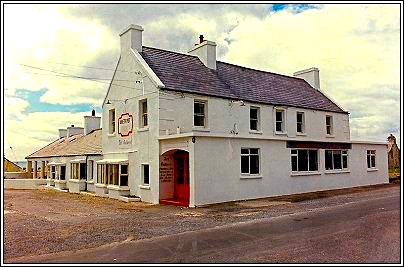
The Amethyst Hotel in Achill, where Lennon stays and is exposed to a guru whose ideas he finds artificial.
In Parts III and IV, the weather still prevents Lennon and Cornelius from getting to the island, and afraid of running afoul of the press, they drive to Achill and stay at the Amethyst Hotel which has attracted a different crowd. Run by Sweet Joe, sometimes called Joe Director, “a beast with auburn hair,” and “the look of a forest hog,” the hotel has attracted self-analytical patrons who have gone beyond the California Screaming of Dr. Arthur Janov and have now begun sessions of “ranting” run by Joe, who sees himself as a guru. In the surreal Part V, Lennon occupies a cave overnight and talks with a seal, who tells him that he has “deathhauntedness,” though Lennon begins to imagine that he has finally traced out the ideas for nine pieces, none of which will be what we know as songs.
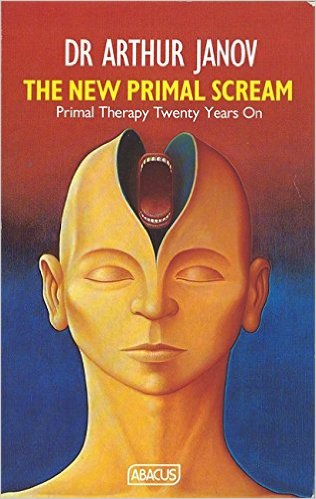
Having already experienced primal scream therapy, Lennon is less than enchanted when patrons of the Amethyst Hotel try to persuade him to Scream with them.
Part VI, an interruption in the narrative, is author Kevin Barry’s own section, as he describes standing at the entrance of the Dakota, where Lennon lived, with other “hunched pilgrims,” a section which becomes autobiographical and journalistic, as Barry also tells how he, as an author, also went about learning Lennon’s intonations and speech patterns. These also include the shockingly poor grammar which Lennon apparently used himself, and which the author includes in his speech here, speech patterns which the author believes now sound old-fashioned. Barry, who describes himself as “a man who has never known an underfed adjective,” has no interest in reading biographies of Lennon for background, he says. He would rather see videos and listen to Lennon’s music, but he, personally, also feels some of the same influences that Lennon did regarding Liverpool, with its universal acceptance of the mysteries of life and its supernatural elements. He ponders the question of “How do you bring up the fact of ghosts in reasonable company, especially the reasonable company of one’s readers?”
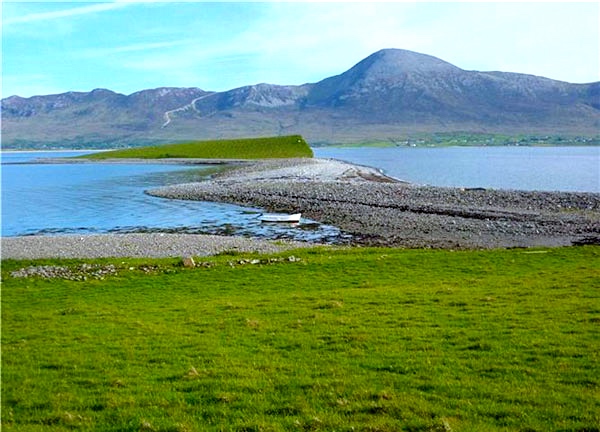
Dorinish is made up of two small islands, Dorinish Beg and Dorinish More, joined by a natural stone causeway, and measures 19 acres approximately.
The conclusion, which is a bit weaker than the rest of the novel, suggests that despite the opportunities opened to Lennon by this trip, and despite the new understandings which Barry suggests Lennon has come to, that his hopes of soon creating something new and exciting may be dashed. His biographical record of not ever producing the “Beatlebone” album which he had dreamed about on the islands suggests that Lennon’s own conclusions that he might be ahead of his time are neither real nor realistic. Insightful, atmospheric, and filled with some of the most lyrical, vibrantly descriptive, and often vulgar language I have read in long time, Beatlebone will warm the hearts of those who love Irish novels while also intriguing those who have always been fans of the Beatles.
ALSO by Barry: CITY OF BOHANE, DARK LIES THE ISLAND, NIGHT BOAT TO TANGIER
Photos, in order: The author’s photo appears on http://blogs.chi.ac.uk
John Lennon with infant son Sean is from https://www.pinterest.com/
The Amethyst Hotel in Achill, where Lennon finds the guru Joe Director to be a phony, is seen on http://www.noelscanlonnovelist.com/
The Janov book about Primal Scream therapy may be found on Amazon.
Dorinish Island, formerly owned by John Lennon, is described here, as a potential resale: http://www.extravaganzi.com/
